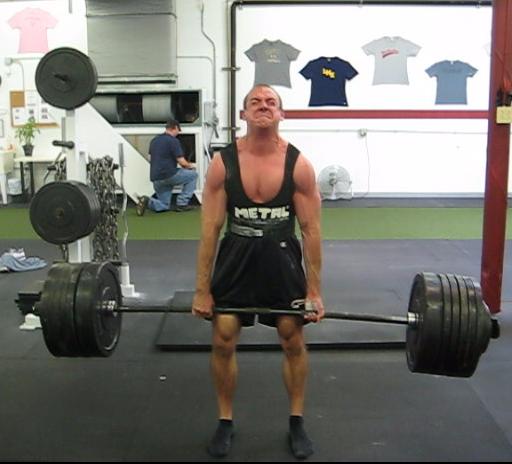 By Eric Cressey
By Eric Cressey
I’ve loved reading Jason’s stuff ever since we first connected back around 2003 because his roots – like mine – are in training athletes. Getting guys bigger and leaner was always great, but at the end of the day, it was about improving performance and keeping guys on the field, ice, or court.
That’s not to say that athletes can’t have their cake and eat it, too, though.
In other words, gaining muscle mass, dropping body fat, improving performance, and staying healthy aren’t mutually exclusive goals. We do it every single winter when dozens of professional baseball players travel to my facility in snowy Hudson, MA – not exactly your prime off-season destination geographic hotspot – to make all these things happen.
Sure enough, each off-season, we have guys gain over 20 pounds in under five months – while improving their strength, vertical jump, sprinting speed, bat speed, and throwing velocity. And, lots of them get leaner in the process. Moreover, I can guarantee you that all of them move better when they leave than when they arrived – and that translates to a lower likelihood of injury.
Does that mean that their programs are superior to “traditional” bodybuilding programs for packing on muscle mass? It’s hard to say. What I can say for certain, though, is that their programs are far more sustainable for the long-term, and they’ve set themselves up for long-term gains in the years to come.
With respect to sustainability, “performance training” implies that you’re focusing on tissue quality, mobility, single-leg work, fluctuations to training stress, and a host of other factors that help to keep you healthy on top of the muscle mass you pack on. This training means something else to everyone, but it’s safe to say that it’s a lot more comprehensive than a program where you just go in and get your pump on. I’ll take a guy who can train indefinitely without missing time due to injury over a guy who gives you three months of hard work, then one month of disabled list time due to injury.
Making progress is about consistency – and that’s heavily reliant on a program that heads off problems before they arise.
In terms of long-term gains, I’d challenge you to find a guy in phenomenal shape – well muscled and lean – who hasn’t lifted some heavy weights to get to where he is. Some of the most high-level bodybuilders on the planet began lifting with powerlifting or training for sports like football – and it’s that foundation of strength that gave rise to longer-term muscle mass gains.
I personally gained a ton of weight in my first year of lifting – and then hit a big fat plateau where nothing budged; my muscle mass didn’t increase and my strength didn’t change. I literally took about a year to go from a 225 bench press to a 230 bench press – and the problem was very simple. I wasn’t training to get strong; I was training to look pretty and get a pump.
Then, a funny thing happened. A buddy of mine introduced me to powerlifting, and I dumped all the stupid exclusively high-rep programs, silly time-under-tension guidelines, and single-joint exercises. I didn’t even think about weight gain; all that mattered was getting strong – and doing so in the 165 weight class. I started out as a legit 165; I weighed in at 161 in my first meet, and deadlifted 510.
At that time, I was in graduate school and was fortunate to have access to a DEXA scan – which is generally viewed as the gold standard for measuring body composition. So, I was able to track exactly what happened to my body with a year of lifting heavy stuff – without any change in dietary practices. In that first year, I gained 11.3 pounds of lean body mass and dropped 5.5 pounds of body fat. Who says you can’t gain muscle and lose fat at th e same time? I didn’t try to do either; I just trained to lift heavy shit.
e same time? I didn’t try to do either; I just trained to lift heavy shit.
The trend continued – and the stronger I got, the bigger I got. My best deadlift now is 660 at a body weight of 188 – and I walk around at a lean ~200 pounds at 5’8” with a 36-inch vertical jump.
I’m not a huge guy (and don’t have interest in being enormous), but the up-and-coming lifter can definitely learn from my example: if you train for performance – even if it’s secondary to getting bigger – you’ll be rewarded down the road (even if it’s by accident, as in my case).
To this end, I’ve created a program, Show and Go: High Performance Training to Look, Feel, and Move Better, that shows you just how you can train to make great progress while avoiding the “All Show and No Go” trap.
UPDATE- 10/26/2011- Eric is relaunching Show and Go this week and selling it for HALF PRICE this week only.


